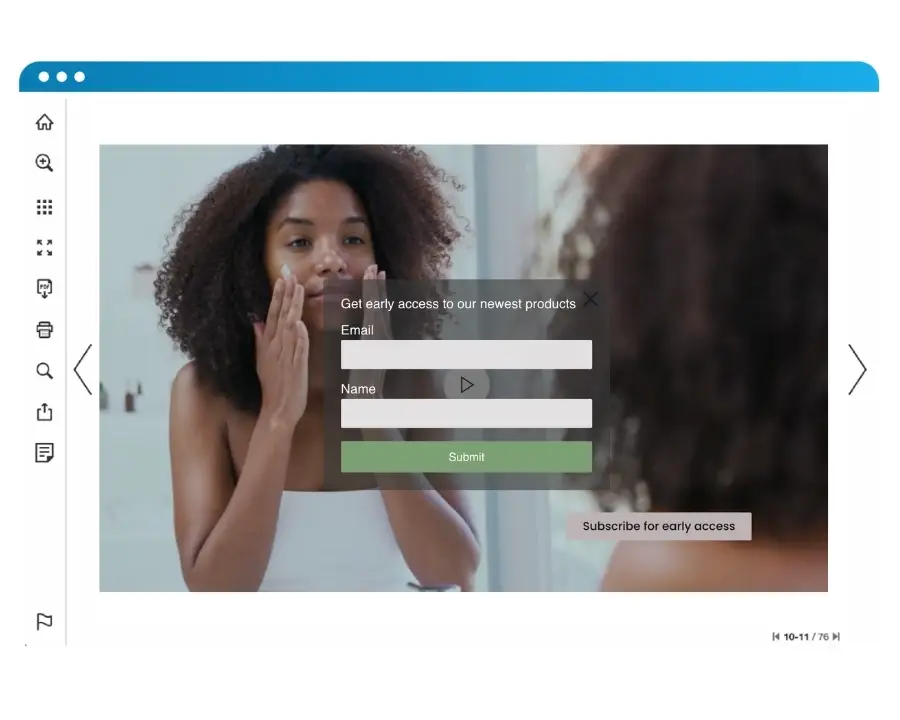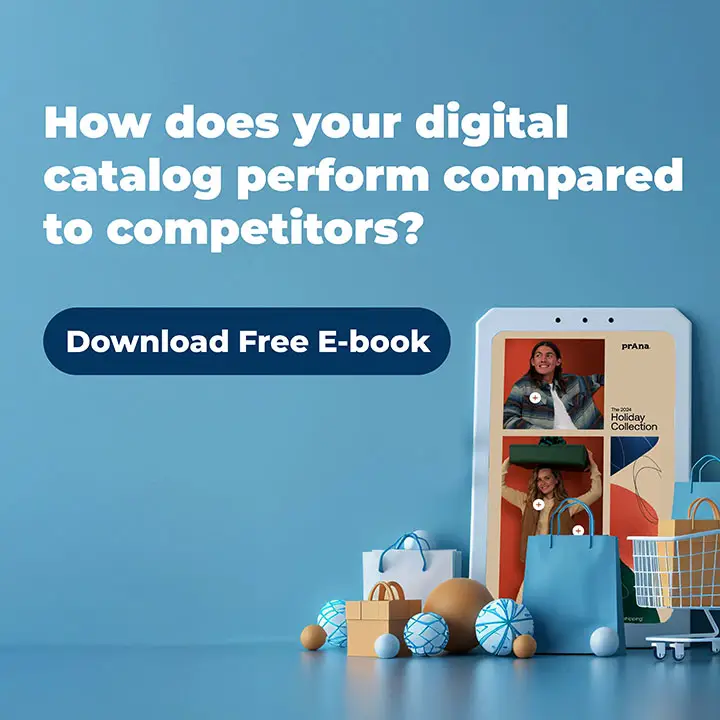Using a strategic lead capture tool effectively can make getting new leads much easier when seamlessly included in the consumer journey. Visitors scroll past emails, ignore landing pages, and rarely fill out forms. Consumers are used to skimming past forms and pop-ups, so capturing their attention takes a smarter approach. The best strategy is to place lead capture forms in spots that naturally fit the customer journey and offer something valuable in return. Embedding forms directly within a digital catalog creates a seamless experience. The user is already browsing, so giving them a useful offer makes sharing their details worthwhile. Lead capture, when done correctly, can boost conversion rates significantly.
Digital catalogs combine visual appeal, interactivity, and clever form placement opportunities that help to capture leads without feeling pushy. If you consider catalogs just product showcases, it is time to rethink. With the right setup, a digital catalog can collect emails, qualify prospects, and feed your sales pipeline, all while keeping the experience smooth and engaging.
Why Digital Catalogs Make a Great Lead Capture Tool
Consumers are already engaged when they browse a digital catalog, so it’s the perfect moment to capture their attention. Unlike separate landing pages interrupting the experience, embedding a lead capture tool directly in the catalog makes the process seamless. Placing forms in places that align with the customer’s journey and offering something valuable in return makes it easy and natural for users to share their details while they’re already exploring your products.
- Engaging visuals keep readers interested longer
- Interactive elements like clickable product images or embedded videos boost engagement
- Clear calls-to-action guide visitors to submit their info
A catalog that combines all three becomes more than a product showcase. It is a lead capture tool that converts casual browsers into prospects.

Retailer-Friendly Lead Capture Examples
Capturing leads does not need to feel complicated. There are many simple ways retailers can use a digital catalog to encourage visitors to share their information. Here are some practical ideas that work across industries:
- Newsletter Subscription for Discounts
Offer a percentage off the first order in exchange for email sign-up. For example, “Subscribe to our newsletter and get 15% off your first purchase.” - Sample Requests
Offer free samples in exchange for contact details:
- Fabric samples for home décor or upholstery
- Seed packets for a garden centre
- Beauty product samples for skincare or fragrances
- Fabric samples for home décor or upholstery
- Exclusive Access
Give visitors early access to seasonal products, members-only content, or downloadable guides. - Contests and Giveaways
Encourage form submissions with a prize draw. For example, “Enter to win a kitchen makeover” for homeware stores. - Personalized Recommendations
Collect preferences to offer tailored product guides. A shoe retailer could provide a “Find your perfect fit guide” after a quick form submission. - Interactive Tools
Quizzes, calculators, or configurators can act as gated content. Visitors share info to see results, for example, “Answer 5 quick questions to design your dream garden.” - Time-Sensitive Offers
Limited-time discounts create urgency, boosting lead capture rates.
Tips to Make Your Digital Catalog an Effective Lead Capture Tool
Even a great catalog needs some careful planning to maximize its lead capture potential. Here are a few practical tips to make sure your forms work efficiently and deliver results:
- Keep Forms Short: Only request essential info like name and email
- Embed Seamlessly: Avoid redirecting visitors to external pages
- Think Mobile: Many users access catalogs on phones, so forms must be mobile-friendly
- Follow Up Immediately: Deliver promised content or offers right away to keep leads warm
Measuring Lead Capture Success
It is important to track performance to see what is working and what can be improved. By analyzing key metrics, retailers can fine-tune their catalogs for better results.
Look at metrics such as:
- Form Completion Rate: The percentage of visitors submitting info
- Time Spent in Catalog: Higher engagement often equals better-quality leads
- Clicks to Gated Sections: Identify which offers work best
- Lead Quality: Are the right people providing details for follow-ups?
By understanding these results, you can continuously refine your content, offers, and forms to capture more leads over time.
Extra Lead Capture Ideas for Retailers
Beyond the basics, there are plenty of creative ways to turn your catalog into a lead capture tool. Here are some extra ideas to spark inspiration:
- Free recipe cards for a grocery store
- DIY project templates for craft stores
- Early access to new collections for fashion brands
- Personalized style or product quizzes
- Loyalty program sign-ups with perks
The Bottom Line
A digital catalog can do more than showcase your products. Adding gated content, step-by-step forms, and thoughtful offers allows you to create a tool that turns casual browsers into interested prospects and helps grow your pipeline.


